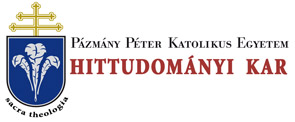Folia Canonica 11. (2008)
PROCEEDINGS OF TENTH INTERNATIONAL CONFERENCE. "Questioni attuali intorno al Battesimo" Budapest, 4th February 2008 - Michael Carragher: Intention of the Minister as Substantive Element of Baptism
208 MICHAEL CARRAGHER A. What is a sacrament?1 a sacrament consists in a solemn act, whereby something is so done that we understand it to signify the holiness which it confers. What is baptism?2 For since the sacraments of the New Law effect a certain sanctification, there the sacrament is completed where the sanctification is completed. Now, the sanctification is not completed in water; but a certain sanctifying instrumental virtue, not permanent but transient, passes from the water, in which it is, into man who is the subject of sanctification. 1) Consequently the sacrament is not completed in the very water, but in applying the water to man, i.e. in the washing. Hence the Master (iv, 3) says that “Baptism is the outward washing of the body done together with the prescribed form of words.” 2) The Baptismal character is both reality and sacrament: because it is something real signified by the outward washing; and a sacramental sign of the inward justification: 3) and this last is the reality only, in this sacrament - namely, the reality signified and not signifying. A sacrament may be considered in its essential qualities as an active principle, signifying the giving of grace and used as a physical instrument by God in effecting what it signifies. Its essential parts are matter and form which are united by the intention of the minister.3 The form determines the natural symbol' Summa Theologiae 111, q. 84, a.l Respondeo dicendum quod sacramentum est in aliqua celebratione, cum res gesta ita fit ut aliquid significative accipiamus quod sancte accipiendum est. See canon 849 of the Latin Code of Canon Law. Two other books used in the research of this paper were C. O’NEILL, Opus Operans, Opus Operatum. A Thomistic Interpretation of a Sacramental Formula, in Thomist XXI (1958) 257-301, 508-540; B. Leeming, Principles of Sacramental Theology, London 1956. 2 Summa Theologiae 111, q. 66, a. 1 Cum enim sacramenta novae legis sanctificationem quandam operentur, ibi perficitur sacramentum ubi perficitur sanctificatio. In aqua autem non perficitur sanctificatio, sed est ibi quaedam sanctificationis virtus instrumentális, non permanens, sed fluens in hominem, qui est verae sanctificationis subiectum. Et ideo sacramentum non perficitur in ipsa aqua, sed in applicatione aquae ad hominem, quae est ablutio. Et ideo magister, in III dist. IV Sent., dicit quod baptismus est ablutio corporis exterior facta sub forma praescripta verborum. Res autem et sacramentum est character baptismalis, qui est res significata per exteriorem ablutionem, et est signum sacramentale interioris iustificationis. Quae est res tantum huius sacramenti, scilicet, significata et non significans. 3 Th. d’Aquin, Les raisons de la foi Les articles de la foi et Les sacraments de l'Église, Paris 1999, 248: “Requiritur etiam in quolibet sacramcntopersona ministry conferentis sacramentum cum intenione quod facit Ecclesiae: quorum trium si aliquid desit id est si non sit debita forma verborum, si non debita material, si minister sacramenti non intendat conferre sacramentum non perficitur sacramentum. Impeditur etiam effectus sacramenti per culpam recipientis, puta si fictus accedat et non corde parato ad suscipiendum sacramentum, talis enim licet sacramentum suscipiat, effectum tamen, id est gratiam Spiritus Sancti, non recipit, quia ut dicitur Sap. 1.5 : ‘Spiritus Sanctus discipline effugiet fictum”’. See also Bull of Union with Armenians issued by the council of Florence on 22 November 1439. “All these sacraments arc made up of three elements: namely, things as the matter, words as
